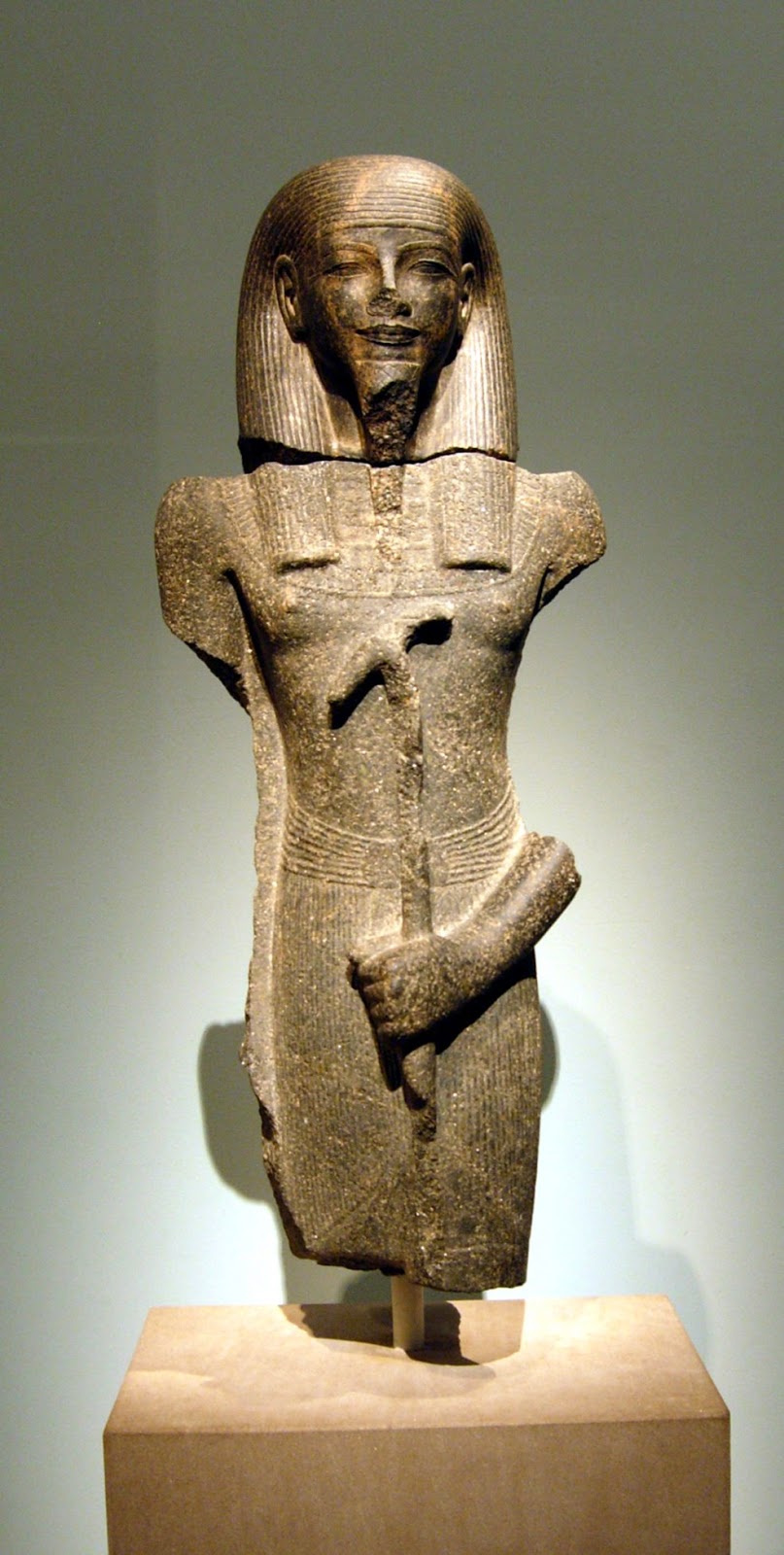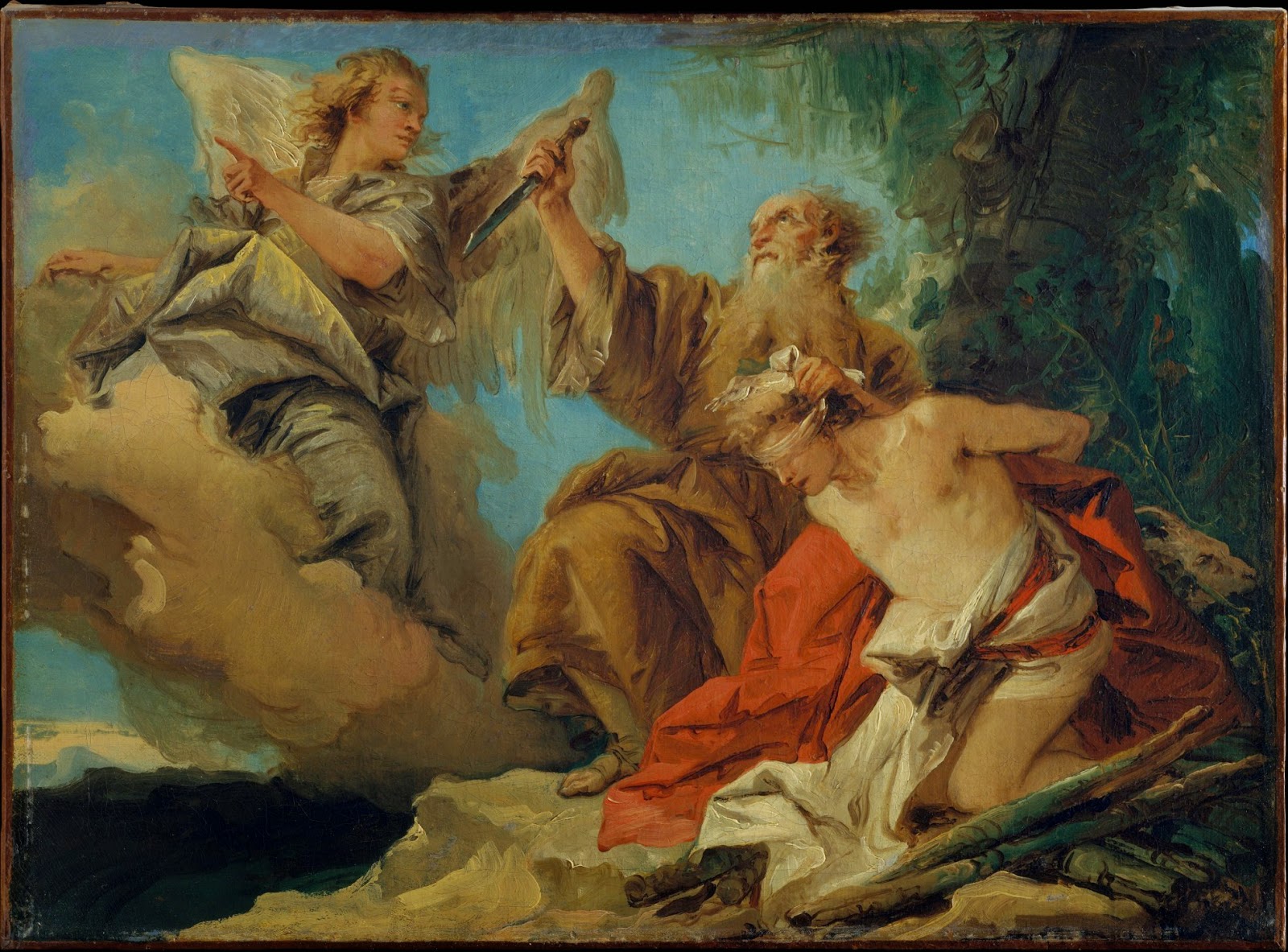 |
Male God
granodiorite
Egypt
c. 1390-1352 BC |
The Metropolitan Museum in New York now makes most publications from past years freely available online. Because they do, I could browse the museum's
Bulletin and discover
Recent Aquisitions : A Selection : 1996-1997. Among the back-stories of the various objects was the following about an Egyptian statue broken apart in ancient times but fated to be put back together again in New York at the end of the 20th century
–
"The opportunity rarely arises of reuniting
long-separated sculptural fragments to create
a virtually complete Egyptian statue. The
head of a god, acquired by the Museum in 1919, has long held a prominent position
among works from the time of Amenhotep III.
The torso, in a private collection for three
decades, was only recently recognized as
belonging to the head. The attire and the divine war-scepter held vertically in front of
the body identify it also as part of a god's
statue. The style dates it to the reign of
Amenhotep III. Although the surfaces of the
two pieces indicate that they spent most of
the past three millennia in different environments,
the dimensions and the position of
the break in each suggested a match. When
brought together, they fit exactly.
The specific god represented here cannot
be determined, since no identifying inscription
or attributes are preserved. However, the
statue almost certainly belongs to the series
of divine images installed by Amenhotep III in
his vast mortuary temple, which once stood
behind the so-called Colossi of Memnon in
western Thebes. The sculptures symbolized the
congregation of gods at Amenhotep's heb sed, a
festival commemorating thirty years of his reign
and intended to rejuvenate the aging king."
Elsewhere on the Met site I discovered that the stone called
granodiorite can only be distinguished from granite by proportional analysis of component elements (though one assumes the Egyptians themselves had other ways of making the distinction). I searched for additional Met sculpture from Egypt made of granodiorite. Here are the ones with highest index marks for visual allure
–
 |
Goddess Sakhmet
granodiorite
Egypt
c. 1390-1352 BC |
 |
Nectanebo II Offers to Osiris Hemag
granodiorite
Egypt
c. 360-343 BC |
 |
Pair statue of Neferkhawet and Rennefer
granodiorite
Egypt
c. 1479-1450 BC |
 |
Seated Statue
granodiorite
Egypt
c. 1950-1640 BC |
 |
Head of the God Amun
granodiorite
Egypt
c. 1336-1327 BC |









































